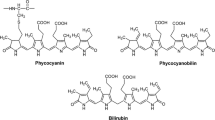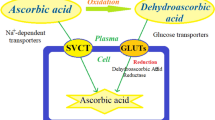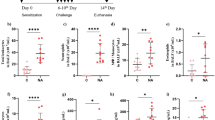Abstract
Tannin, a polydisperse polyphenol extracted from cotton bracts (CBE), has been implicated in the pathogenesis of byssinosis, a lung disease of mill workers. CBE tannin inhibits chloride secretion in airway epithelial cells by means of an unknown mechanism(s). Activation of protein kinase C (PKC) by PMA (phorbol 12-myristate 13-acetate) in airway cells increases chloride secretion. The effect of tannin on this PKC pathway was examined, using canine tracheal epithelium mounted in Ussing chambers. PMA addition (10 nM) to the mucosal bath resulted in a 0.36 ± 0.07 μEq/cm2 · h (mean ± SEM, n = 20) increase in short-circuit current (Isc) and a 0.38 ± 0.17 μEq/cm2 · h increase in net chloride secretion (Jnet). The inactive 4α-phorbol had no effect. Tannin addition to the mucosal bath produced a dose-dependent decrease in Isc and Jnet. In tissues pretreated with 2–50 μg/ml tannin, and subsequently stimulated with PMA, tannin inhibited PMA stimulation of chloride secretion beginning at a tannin concentration of 10 μg/ml (0.09 ± 0.05 μEq/cm2 · h [n = 10] increase in Isc and 0.08 ± 0.03 μEq/cm2 · h increase in Jnet with PMA after tannin pretreatment). At 50 μg/ml tannin, the stimulatory effect of PMA was completely abolished. The known PKC inhibitor, H-7 (20 μM), inhibited PMA stimulation, while chelerythrine (2 μM) had not effect on PMA-stimulated Isc and Jnet, and calphostin C was toxic to the airway epithelium. In membrane fragments, 2.5 μg/ml tannin inhibited the rate of histone III phosphorylation by PMA from 32.1 ± 4.4 nmol/mg protein per min to 20.1 ± 2.7 nmol/mg protein per min (n = 7). In bovine airway cells, tannin pretreatment (2.5 μg/ml) decreased the cytosolic activity of PKC but had no effect on PKC translocation to the membrane. We conclude that tannin inhibits chloride secretion in airway epithelial cells in part by inhibiting PKC.
Similar content being viewed by others
References
Barthelson RA, Jacoby DB, Widdicombe JH (1987) Regulation of chloride secretion in dog tracheal epithelium by protein kinase C. Am J Physiol 253 (Cell Physiol 22):C802-C808
Bell AA, Stipanovic RD (1983) Biologically active compounds in cotton: an overview. In: Wakelyn PJ, Jacobs RR (eds) Proceedings of the Cotton Dust Research Conference No. 7. National Cotton Council, Memphis, Tenn. pp 77–80
Berridge MJ (1987) Inositol trisphosphate and diacylglycerol: two interacting second messengers. Annu Rev Biochem 56:159–193
Bouhuys A (1976) Byssinosis: scheduled asthma in the textile industry. Lung 154:3–16
Bruning JL, Kintz BL (1977) Computational Handbook of Statistics. 2nd ed. Scott Foresman, Glenview, Ill. pp 113–116
Castagna M, Takai Y, Kaibuchi K, Sano K, Kikkawa U, Nishizuka Y (1982) Direct activation of calcium-activated, phospholipid-dependent protein kinase by tumor-promoting phorbol esters. J Biol Chem 257:7847–7851
Castellan RM, Olenchock SA, Hankinson JL, Millner PD, Cocke JB, Bragg CK, Perkins HH, Jacobs RR (1984) Acute bronchoconstriction induced by cotton dust: dose-related responses to endotoxin and other dust factors. Ann Intern Med 101:157–163
Cloutier MM, Lesniak KM, Russell JA, Rohrbach MS (1984) Effect of cotton bracts extract on canine tracheal epithelium and shunt pathway. Am Rev Respir Dis 130:1087–1090
Cloutier MM, Rohrbach MS (1986) Effects of endotoxin and tannin isolated from cotton bracts on the airway epithelium. Am Rev Respir Dis 134:1158–1162
Cloutier MM, Rohrbach MS (1989) Effects of tannins from different sources on airway epithelial and platelet function. Lung 167:117–128
Cloutier MM, Guernsey L, Sha'afi RI (1994) Tannin inhibits CAMP pathways in bovine airway epithelium. Am J Respir Cell Mol Biol 10:106–112
Cooke TF (1979) Chemical composition of cotton dust and its relation to byssinosis: a review of the literature. Textile Res J 49:398–404
Exton JH (1990) Signaling through phosphatidylcholine breakdown. J Biol Chem 265:1–4
Herbert JM, Augereau JM, Gleye J, Maffrand JP (1990) Chelerythrine is a potent and specific inhibitor of protein kinase C. Biochem Biophys Res Commun 172:993–999
Hidaka H, Inagaki M, Kawamoto S, Sasaki Y (1984) Isoquinolinesulfonamides: novel and potent inhibitors of cyclic nucleotide dependent protein kinase and protein kinase C. Biochemistry 23:5036–5041
Karol MH, Ogundiran A, Gatty C, Millner P, Domelsmith LN, Rousselle MA (1987) Use of the guinea pig animal model to assess treatments of cotton dust. In: Wakelyn PJ, Jacobs RR (eds) Proceedings of the Cotton Dust Research Conference No. 11. National Cotton Council, Memphis, Tenn., pp 116–118
Katada T, Gilman AG, Watanabe Y, Bauer S, Jakobs KH (1985) Protein kinase C phosphorylates the inhibitory guanine-nucleotide-binding regulatory component and apparently suppresses its function in hormonal inhibition of adenylate cyclase. Eur J Biochem 151:431–437
Kobayashi E, Nakano H, Morimoto M, Tamaoki T (1989) Calphostin C (UCN-1028C), a novel microbial compound, is a highly potent and specific inhibitor of protein kinase C. Biochem Biophys Res Commun 159:548–553
Kuo ML, Wu WS, Lee KC, Lin JK (1993) Effects of tannic acid on 12-O-tetradecanoyl-phorbol-13-acetate-induced protein kinase C activation in NIH 3T3 cells. Biochem Pharmacol 46(8):1327–1332
Lauque DE, Hempel SL, Schroeder MA, Hyatt RE, Rohrbach MS (1988) Evaluation of the contribution of tannin to the acute pulmonary inflammatory response against inhaled cotton mill dust. Am J Pathol 133:163–173
Lowry OH, Rosebrough NJ, Farr AL, Randall RJ (1951) Protein measurement with the Folin phenol reagent. J Biol Chem 193:265–275
Matsui MS, Chew SL, DeLeo VA (1992) Protein kinase C in normal human epidermal keratinocytes during proliferation and calcium-induced differentiation. J Invest Dermatol 99:565–571
Niedel JE, Blackshear PJ (1986) Protein kinase C. In: Putney JW Jr (ed) Phosphoinositides and Receptor Mechanisms. Alan R Liss, New York, pp 47–88
Robinson PJ (1992) Potencies of protein kinase C inhibitors are dependent on the activators used to stimulate the enzyme. Biochem Pharmacol 44(7):1325–1334
Rohrbach MS, Rolstad RA, Tracy PB, Russell JA (1984) Platelet 5-hydroxytryptamine release and aggregation promoted by cotton bracts tannin. J Lab Clin Med 103:152–160
Rohrbach MS, Rolstad RA, Russell JA (1986) Tannin is the major agent in cotton mill dust responsible for human platelet 5-hydroxytryptamine secretion and thromboxane formation. Lung 164:187–197
Rohrbach MS, Kreofsky T, Rolstad RA, Russell JA (1989) Tannin-mediated secretion of a neutrophil chemotactic factor from alveolar macrophages: potential contribution to the acute pulmonary inflammatory reaction associated with byssinosis. Am Rev Respir Dis 139:39–45
Rohrbach MS (1994) Biological activity of condensed tannins. In: Rylander R, Jacobs RR (eds) Organic Dusts: Exposure, Effects and Prevention. Lewis Publishers, Inc, Chelsea, pp 69–71
Ross EM, Gilman AG (1977) Reconstitution of catecholamine-sensitive adenylate cyclase activity: interaction of solubilized components with receptor-replete membranes. Proc Natl Acad Sci USA 74:3715–3719
Rylander R, Snella M-C (1976) Acute inhalation toxicity of cotton plant dusts. Br J Ind Med 33:175–180
Rylander R, Imbus HR, Suh MW (1979) Bacterial contamination of cotton as an indicator of respiratory effects among card room workers. Br J Ind Med 36:299–304
Rylander R (1981) Bacterial toxins and etiology of byssinosis. Chest 79 (Suppl):34–38
Sakanoue Y, Hatada T, Kusunoki M, Yanagi H, Yamamura T, Utsunomiya J (1991) Protein kinase C activity as marker for colorectal cancer. Int J Cancer 48:803–806
Sha'afi RI, Molski TFP, Huang CK, Naccache PH (1986) The inhibition of neutrophil responsiveness caused by phorbol esters is blocked by the protein kinase C inhibitor H-7. Biochem Biophys Res Commun 137:50–60
Sharkey NA, Leach KL, Blumberg PM (1984) Competitive inhibition by diacylglycerol of specific phorbol ester binding. Proc Natl Acad Sci USA 81:607–610
Taylor G, Massoud AAE, Lucas F (1971) Studies on the aetiology of byssinosis. Br J Ind Med 28:143–151
Vuk-Pavlovic Z, Russell JA, Rohrbach MS (1988) Cotton bract tannin: a novel T-lymphocyte mitogen and possible causative agent of byssinosis. Int Arch Allergy Appl Immunol 87:14–18
Welsh MJ (1987) Effect of phorbol ester and calcium ionophore on chloride secretion in canine tracheal epithelium. Am J Physiol 253 (Cell Physiol 22):C828-C834
Author information
Authors and Affiliations
Additional information
Offprint requests to: Michelle M. Cloutier
Rights and permissions
About this article
Cite this article
Cloutier, M.M., Guernsey, L. Tannin inhibition of protein kinase C in airway epithelium. Lung 173, 307–319 (1995). https://doi.org/10.1007/BF00176894
Accepted:
Issue Date:
DOI: https://doi.org/10.1007/BF00176894




